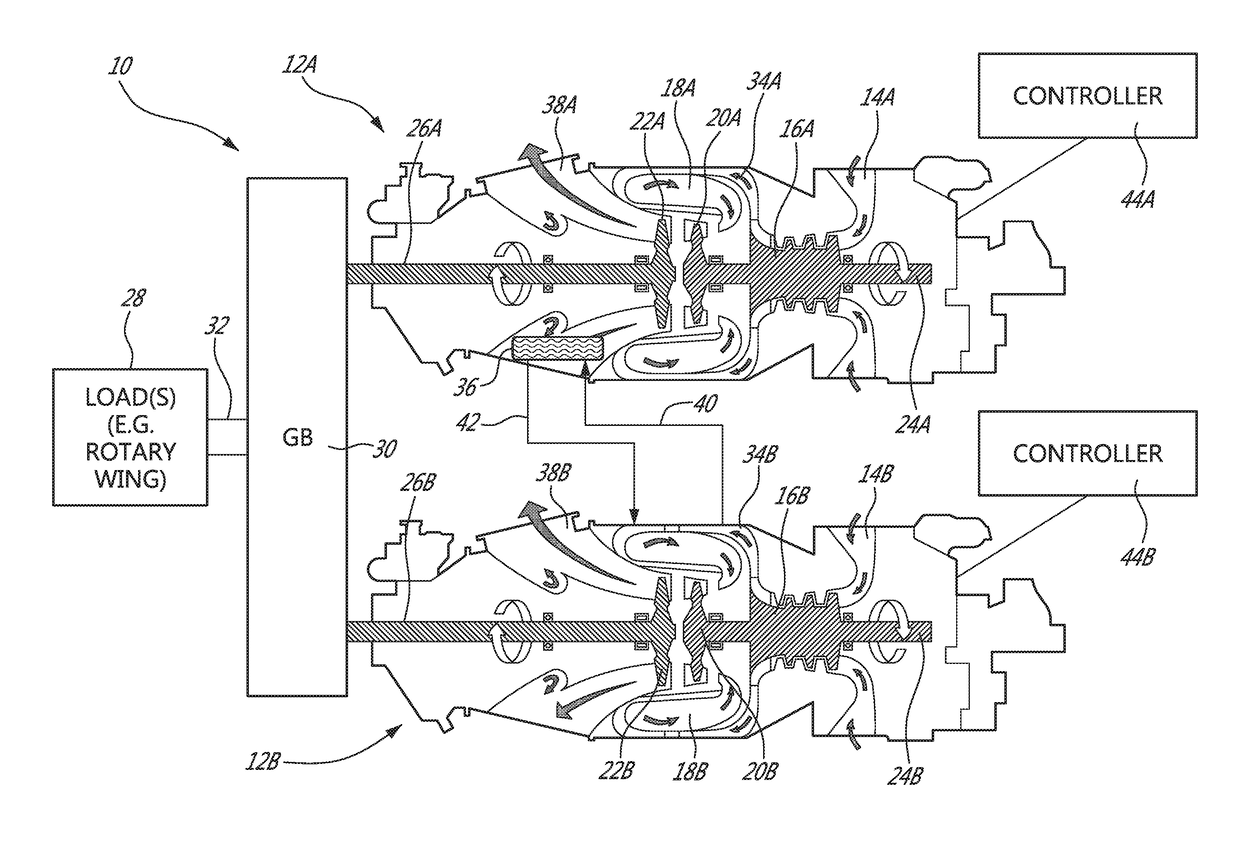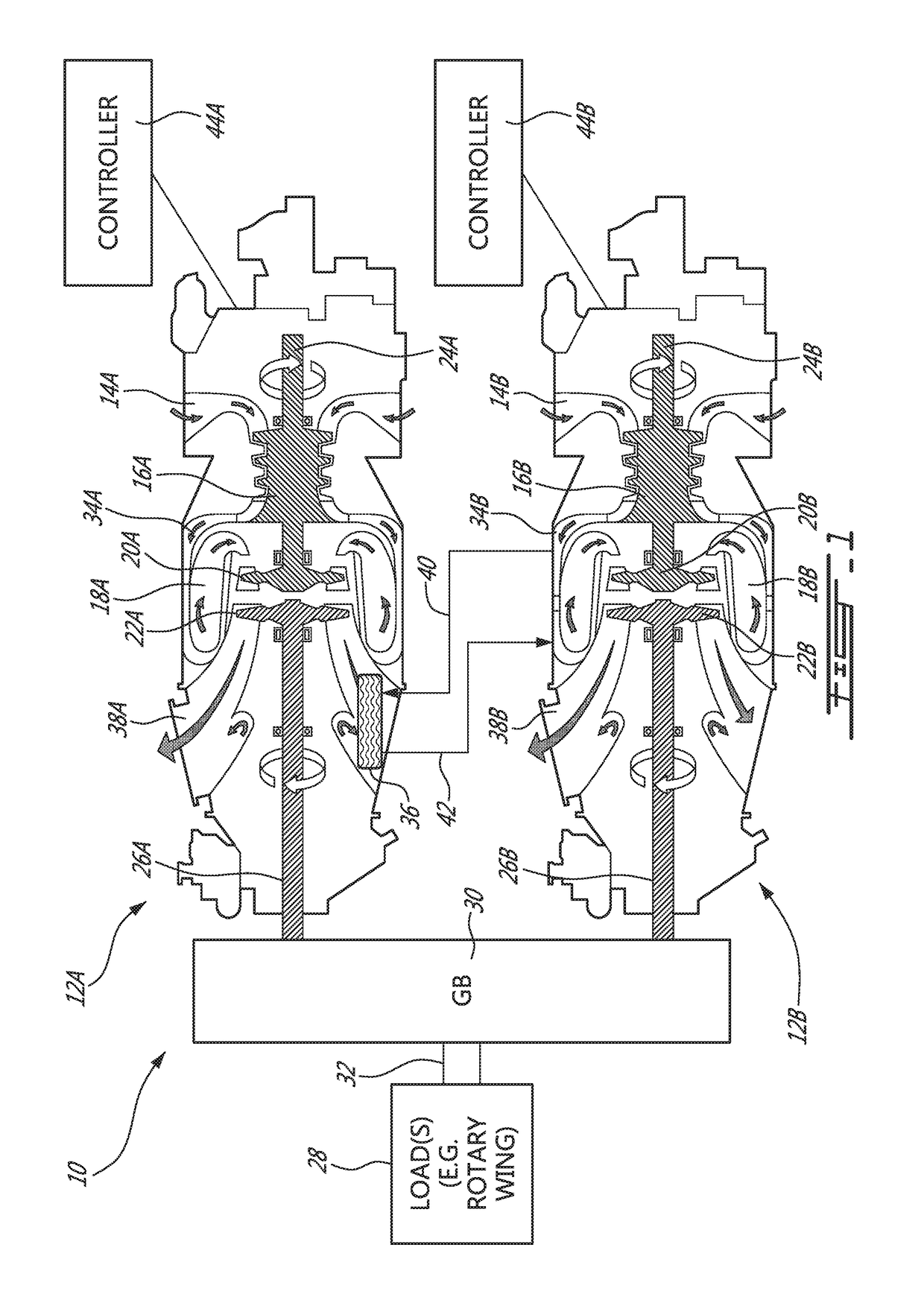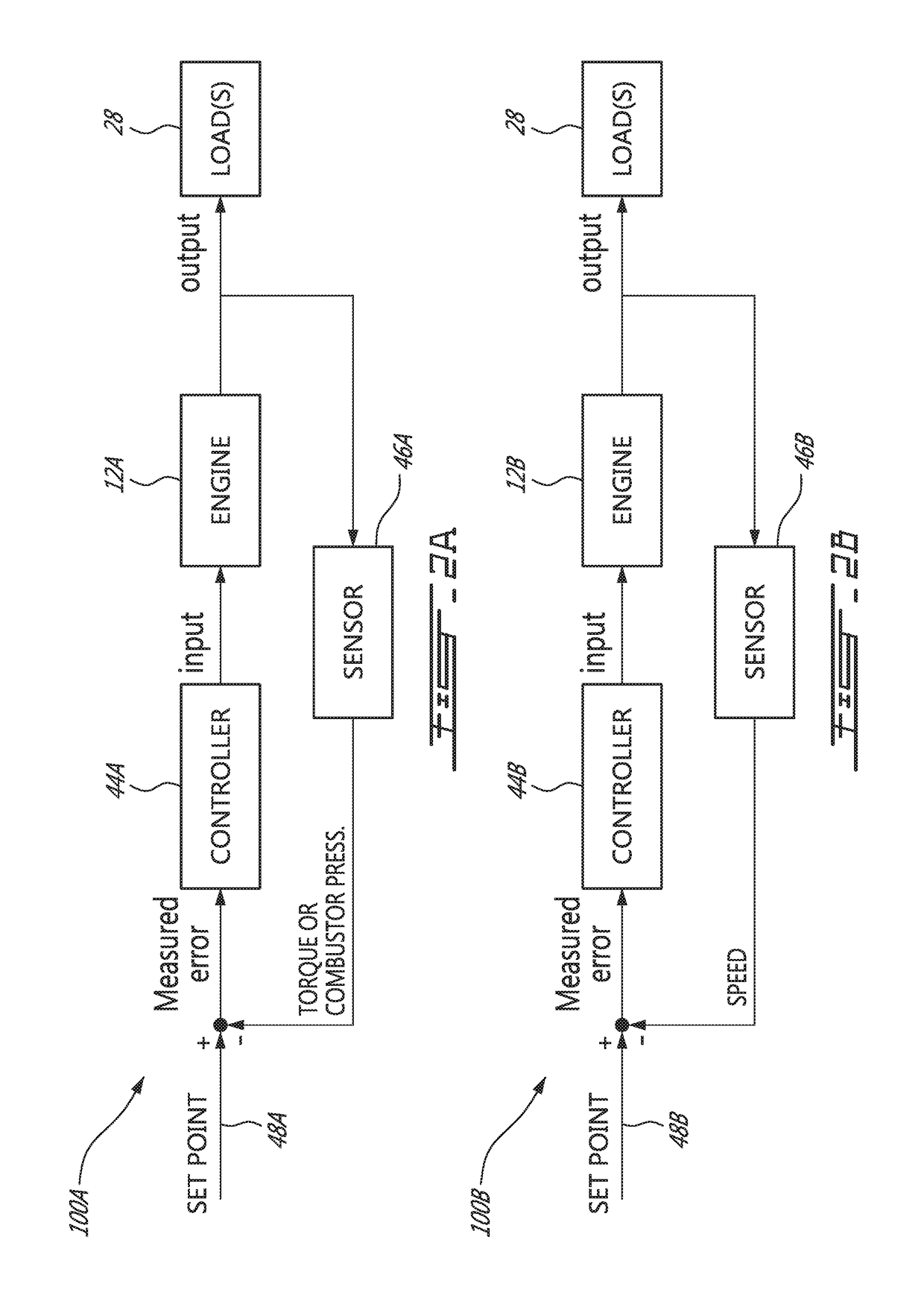Multi-engine aircraft power plant with heat recuperation
a multi-engine aircraft and power plant technology, applied in the direction of jet propulsion plants, turbine/propulsion fuel control, mechanical equipment, etc., can solve the problems of low fuel efficiency of both engines of helicopters operating at a reduced power output setting, relatively long flight periods, and not operating within the optimal performance window of engines
- Summary
- Abstract
- Description
- Claims
- Application Information
AI Technical Summary
Benefits of technology
Problems solved by technology
Method used
Image
Examples
Embodiment Construction
[0051]The present disclosure relates to configurations of multi-engine power plants for (e.g., rotary-wing) aircraft applications and associated methods of operation. In some embodiments, the disclosed configurations of multi-engine power plants may allow one engine of the power plant to idle when not needed and allow such engine to increase its out power level relatively rapidly when needed to supplement the driving engine or to take over for the driving engine in the event of a failure of the driving engine. In some embodiments, a cross-engine heat recuperation system may transfer waste heat from the driving engine to the idling engine in order to reduce the fuel consumption of the idling engine. In some embodiments, control (e.g., modulating) of the idling engine may be based on an operating speed of the load (e.g., main rotor of a helicopter) drivingly coupled to the multi-engine power plant so that a separate dedicated engine failure detection system may not be required to caus...
PUM
 Login to View More
Login to View More Abstract
Description
Claims
Application Information
 Login to View More
Login to View More - R&D
- Intellectual Property
- Life Sciences
- Materials
- Tech Scout
- Unparalleled Data Quality
- Higher Quality Content
- 60% Fewer Hallucinations
Browse by: Latest US Patents, China's latest patents, Technical Efficacy Thesaurus, Application Domain, Technology Topic, Popular Technical Reports.
© 2025 PatSnap. All rights reserved.Legal|Privacy policy|Modern Slavery Act Transparency Statement|Sitemap|About US| Contact US: help@patsnap.com



